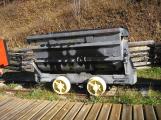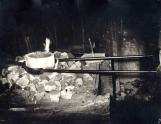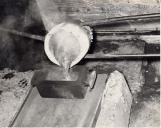15
The process of melting the concentrate in graphite crucibles over a fire was used through the 1950's and into the 1960's. The furnace was used a little later until the mine was closed in 1971.17
The melted sponge gold was poured from a crubicle into the gold mold just out of the furnace. The weight of the gold brick after cleaning off the waste materials that formed on the top of the brick was approximately 380 to 386 ounces and measured about 5" by 3" by 9" long.18
In 1959 the two mines amalgamated to form Bralorne-Pioneer Mines Ltd. under the direction of Franc R. Joubin. This move facilitated the development of holdings along their common boundary and the combined working capital provided funds for exploration and expansion. In 1961 the Pioneer workings were closed down due to lack of available ore.19
1971 Day crew of Bralorne Pioneer Mines Ltd. shortly before it's closure.June, 1971
Bralorne Mine, Bralorne, B.C. Canada
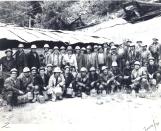
20
By 1965 Joubin disposed of his shares and left the board. Increases in miners' wages, problems with mining at increasing depths and a 25 percent increase in production held the costs of production at just 7 percent of the 1957 figure. The price of gold was stuck at $35.00 U.S. an ounce, no important finds of high grade ore was indicated and outside exploration failed to come up with a new mine to replace Bralorne.Under George Davenport's leadership, the company began to turn away from mining, acquiring interests in gas and oil and incorporated a subsidiary company to manage them. Bralorne continued to operate, hoping that the price of gold would eventually increase. The Queen shaft was sunk a further 373 feet. Development work in 1967 added to the mine's ore reserves with grades at 0.53 ounces per ton. Now the mine was working at the 43 level which proved to be challenging. At this depth the rock temperature was 128 degrees fahrenheit and ventillation had to be increased proving difficult and expensive. Now gold mining was marginal with the cost of production being above the price of gold. In 1967 Can-Fer Mines Ltd. accumulated shares on the open market eventually obtaining 250,000 and in 1968 two of their officers joined the Bralorne Pioneer board. The two companies merged to form Bralorne Can-Fer Resources Limited in 1969, leaving the Bralorne Pioneer shareholders with less than 30 percent interest in the continuing company. The mine operated through 1970 with the Emergency Gold Mining Assistance Act providing $10 for each ounce of gold produced and supplying a modest cash flow. But now Bralorne and Can-Fer was only a salvage operation that would close as soon as gold could not be produced at an acceptable cost. In the Summer of 1971 the Bralorne Mine finally closed and the community dissolved to a fraction of what it once was.
21
Bralorne Mine ultra violet machine1946
Bralorne-Pioneer Museum Health and Medical display, Bralorne, B.C
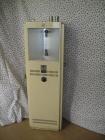
22
This and the next four frames show items on display in the Bralorne-Pioneer Museum building, donated by various donors who retrieved these from the mine property upon it's closure.23
Cupels and trays with handles on display in Bralorne Pioneer Museum, Assay Lab display.11 November 2004
Bralorne-Pioneer Museum Assay Lab Display, Bralorne, B.C. Canada
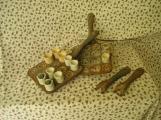
24
Fire Assay Mitts used in Assay lab for removal of trays from fire furnace.4 December 2004
Bralorne-Pioneer Museum Assay Lab Display, Bralorne, B.C. Canada
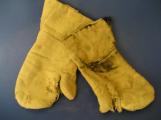
25
Side element in fire assay furnace.4 December 2004
Bralorne-Pioneer Museum Assay Lab Display, Bralorne, B.C. Canada
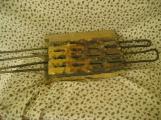
26
Bralorne Mine assay lab4 December 2004
Bralorne-Pioneer Museum Assay Lab Display, Bralorne, B.C. Canada
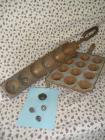
27
Ore car at the Bralorne Pioneer Museum19 November 2004
Bralorne-Pioneer Museum outside on board walk display, Bralorne 2nd townsite
